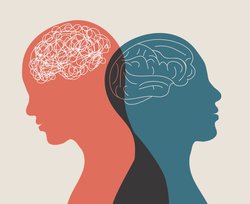 Depending on the setting and level of care, treating OCD can look different. There are some key terms and differences that can help you navigate a conversation about what level of care is most appropriate for you. So, what is meant by “level of care?” Levels of care refer to the range of treatment options for a disorder such as OCD. This range of services varies in intensity, frequency, duration, setting, and treatment goals. It is based on the client’s needs and the impact OCD has on daily functioning. You and your treatment provider will collaborate to determine the appropriate level of care. This will likely include an assessment of your challenges and strengths and may include consultation with other providers or family members.
Depending on the setting and level of care, treating OCD can look different. There are some key terms and differences that can help you navigate a conversation about what level of care is most appropriate for you. So, what is meant by “level of care?” Levels of care refer to the range of treatment options for a disorder such as OCD. This range of services varies in intensity, frequency, duration, setting, and treatment goals. It is based on the client’s needs and the impact OCD has on daily functioning. You and your treatment provider will collaborate to determine the appropriate level of care. This will likely include an assessment of your challenges and strengths and may include consultation with other providers or family members.
Higher levels of care offer more intensive support by increasing the frequency and duration of treatment. Once therapeutic gains have been achieved, an individual may “step down” or move to a level of care that is more appropriate to the need for support. In the same line of thinking, one may need to move to a higher level of care. A provider will continuously assess which level of care is most appropriate. Treatment at the appropriate level of care is crucial in achieving and maintaining treatment goals for OCD. It also promotes time-efficient and cost-effective treatment. In my clinical experience, patients have often noted how the similarities and differences can be confusing and overwhelming. With the help of an experienced OCD provider, the level of care you receive will help support you in your treatment journey.
Here is a concise definition of the different levels of care in treating OCD:
- Outpatient Treatment - Outpatient care is simply meeting with your therapist once per week for an hour in an office setting. A provider may recommend multiple sessions a week based on symptom severity and degree of functional impairment. It may also wind down to every other week or monthly as more progress is made.
- Group Therapy - Group therapy for OCD has great benefits and may occur in addition to any of the other levels of care. Typically a group will meet once a week and could be in any therapeutic setting.
- IOP (intensive outpatient program) - An intensive outpatient program is an outpatient therapy but the duration, intensity, and frequency are increased. Generally, an IOP will be 3 hours per day for 3-5 days per week.
- PHP (partial hospitalization program) - Following discharge from a residential program, participating in a partial hospitalization program is often recommended according to the Anxiety and Depression Association of America. Partial hospitalization programs allow patients to attend treatment (often a combination of group and individual therapy), 5 days a week for typically 6-8 hours per day in a hospital setting.
- Residential - Patients receive care while living voluntarily in an unlocked mental health treatment center or hospital.
- Inpatient - This is the highest level of care for a mental health condition. Treatment is provided in a locked unit in a mental health hospital on a voluntary or sometimes involuntary basis. Patients are admitted here if they are unable to care for themselves or are a danger to themselves or others. The goals of inpatient treatment are to stabilize the patient, which generally takes several days to a week, and then transition the patient to a lower level of care (IOCDF).
Conclusion
There are a wide range of options in the care and treatment of OCD. Making sure you have a firm understanding of your options and having reliable resources to go to for questions is essential for lasting treatment gains.
If you or a loved one would like to speak to a professional specialized in the treatment of OCD to discuss level of care options click here.
- Brittany Steiner, LPC

